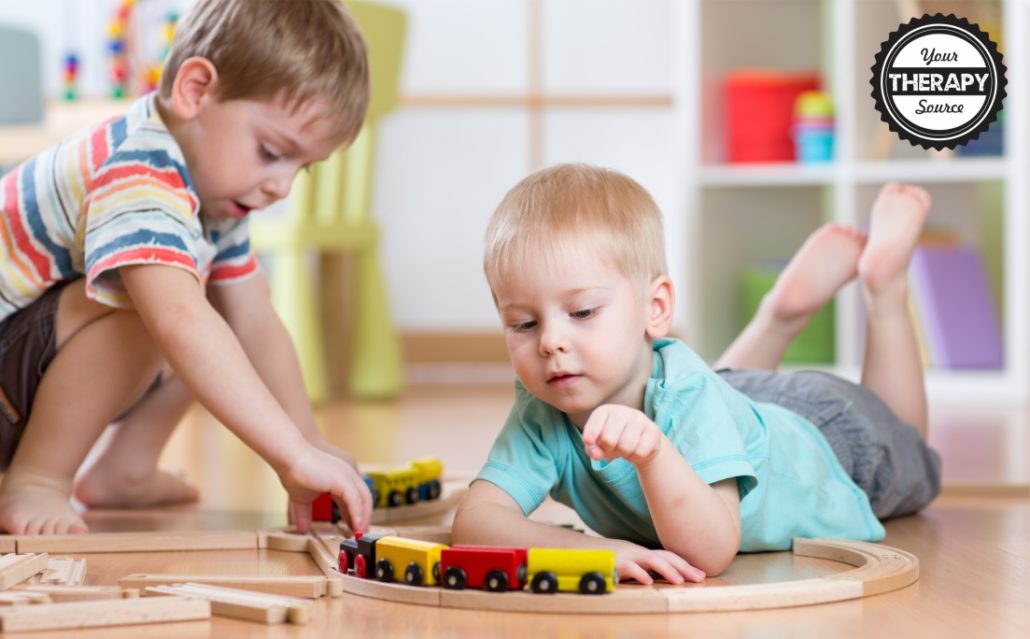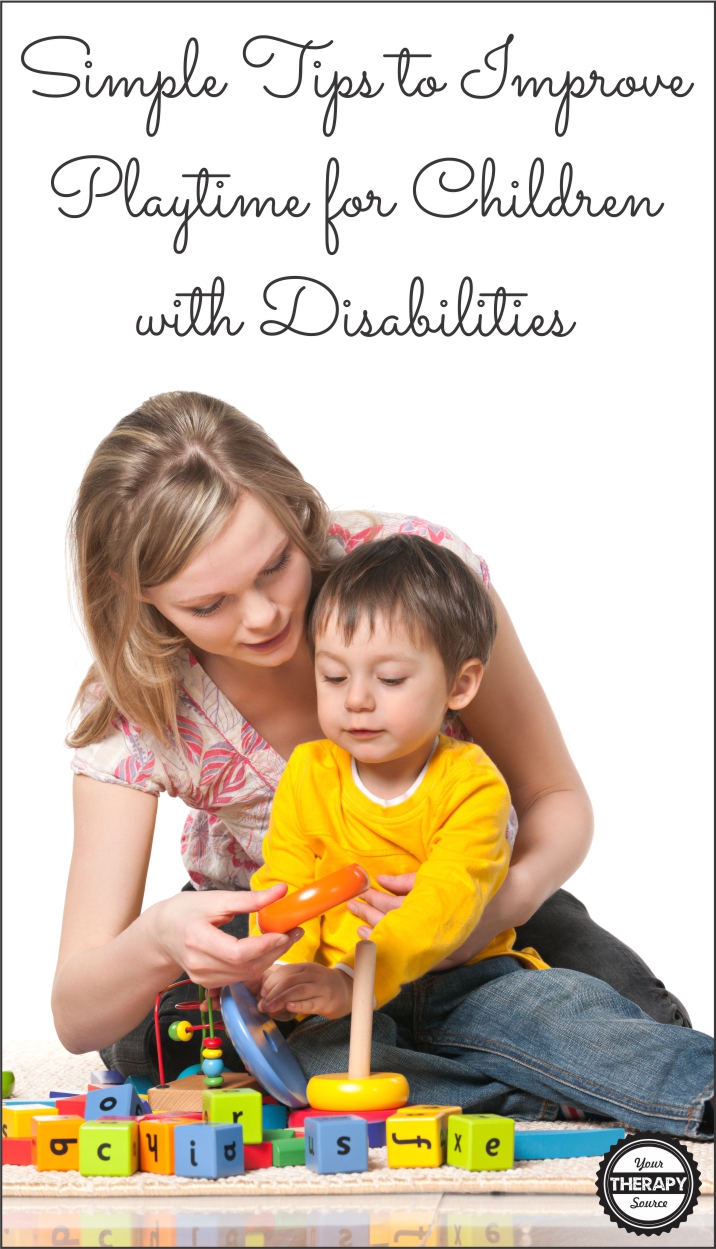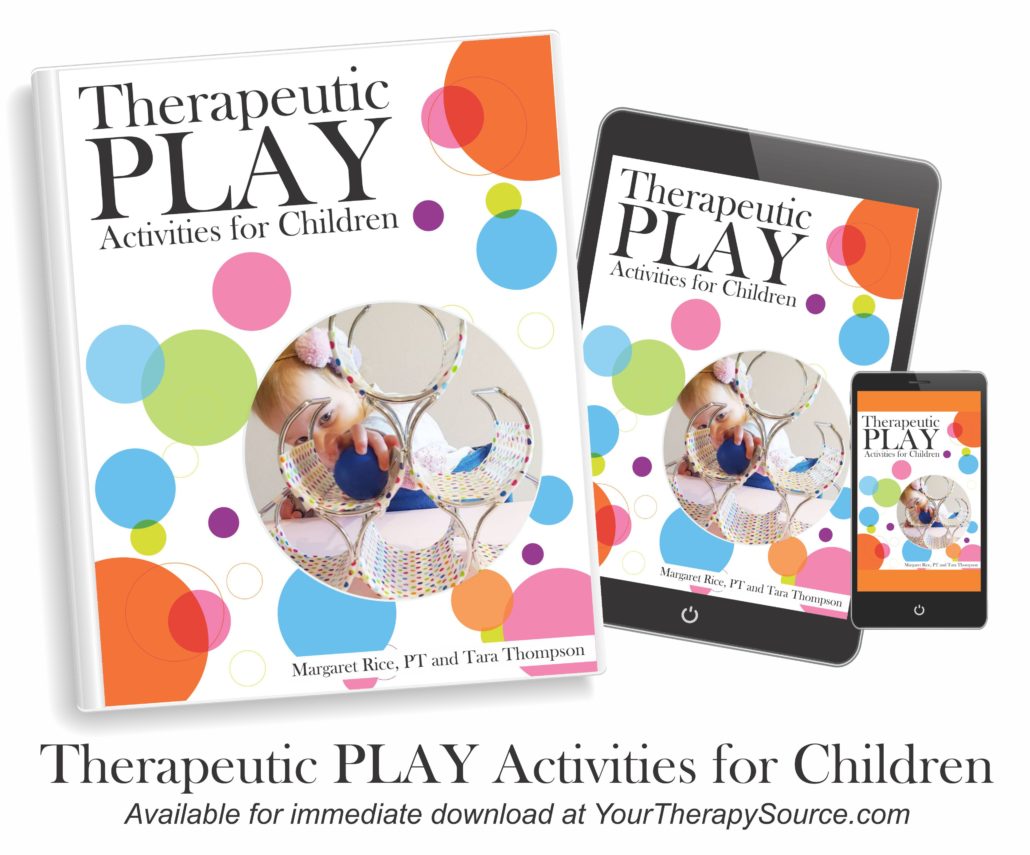3 Simple Tips to Improve Playtime for Children with Disabilities
 3 Simple Tips to Improve Playtime for Children with Disabilities
3 Simple Tips to Improve Playtime for Children with Disabilities
Children learn through play and parents help to direct that play throughout development. For children with disabilities, playtime can sometimes be a struggle based on the child’s physical abilities (i.e. hand manipulation), toy choice and environment. The overall goal of playtime is for children to learn and practice fine motor, gross motor, visual perceptual, social, emotional and cognitive skills. And of course for children to HAVE FUN! Unfortunately, if children struggle to manipulate toys, understand the function or expand their play repertoire can make playtime frustrating for the children and parents. Here are 3 simple tips to improve playtime for children with disabilities:
LESS IS MORE WHEN IT COMES TO VERBAL CUES
As a parent or teacher, less is more when it comes to verbal cues. Rather than offer verbal suggestions of how to initially use a toy or object, give children a chance to learn how to problem solve on their own. You may be very tempted to provide multiple step directions to teach a child how to play, but let him/her learn on their own to help improve independent playtime skills.
HAVE A BALANCE BETWEEN SUCCESS AND MISTAKES
It is important to create just right activities to ensure that children can have success during playtime. BUT, it is also very important for children to make mistakes. If you see your child struggling, don’t jump in and help right away. When children make mistakes, then they have to problem solve to fix that make mistake. The problem solving helps to ensure that they learn from their play experiences.
STIMULATE AND EXTEND A CHILD’S INTEREST IN PLAY
If your child is stuck at a certain level of play, offer suggestions to extend his/her play. Many times children have a high-interest level in certain toys and enjoy repetitive practice. Sometimes other children, parents or teachers can model or prompt children to extend their play. For example, a child is highly interested in playing with toy trains. The child enjoys lining up the straight tracks and drives the trains. Other children, parents or teachers can model adding curved tracks, different trains or hills to extend the child’s playtime.
Read 10 tips for helping children with cerebral palsy during playtime. This printable tip sheet is from Therapeutic Play Activities for Children.
Therapeutic Play Activities for Children digital download includes 100 play activity pages and 12 tip sheets. The play activities encourage the development of fine motor skills, bimanual skills, rolling, crawling, tall kneeling, standing balance and cruising with a strong focus on children with cerebral palsy. FIND OUT MORE INFORMATION.
Reference: Finnie, N. R. (2009). Handling the young child with cerebral palsy at home. Elsevier Health Sciences.



